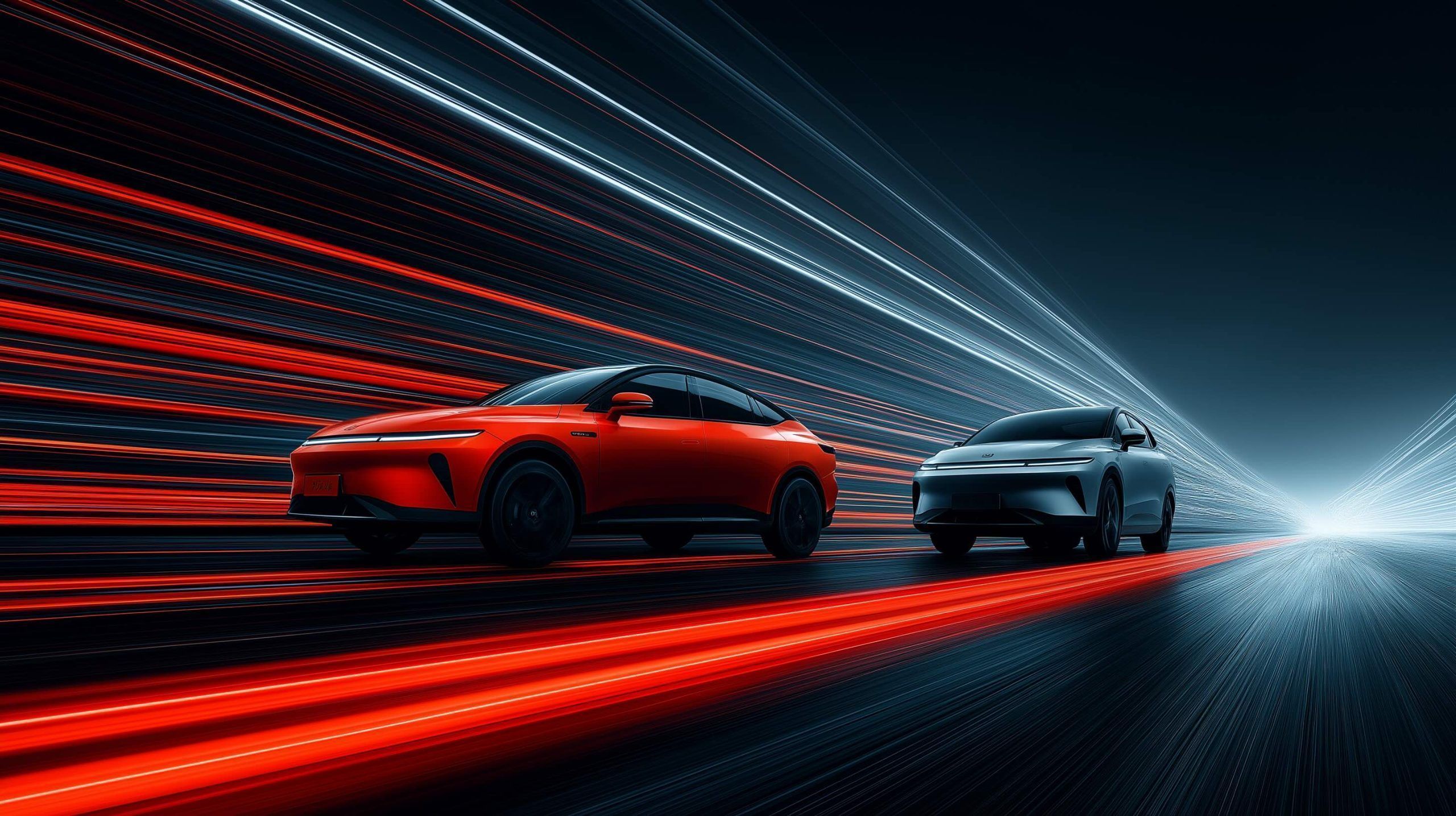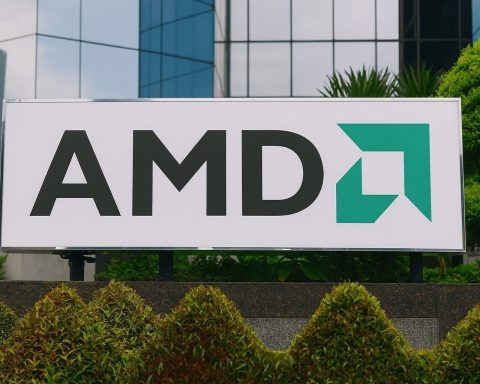- Moonshot AI released its open-source large language model “Kimi K2” in July 2025, claiming it outperforms other open models and rivals top U.S. models in coding and complex tasks.
- Beijing filings showed 39 new data centers in Xinjiang and Qinghai planned to deploy Nvidia H100/H200 GPUs.
- The plan to build a massive AI supercomputing network in western deserts involves over 115,000 Nvidia chips.
- Moore Threads and MetaX filed for IPOs on Shanghai’s STAR Market in July to raise about ¥12 billion ($1.65 billion).
- Biren Technology raised ¥1.5 billion in July and was reportedly eyeing a Hong Kong listing.
- Huawei offered its Ascend 910B AI chips to UAE, Saudi Arabia and Thailand in July 2025, along with remote access to its CloudMatrix 384 AI cloud.
- China completed the BeiDou-3 navigation satellite constellation, now fully operational with 30 satellites.
- China began deploying the “Three-Body” space-based AI constellation, launching 12 space computing satellites in mid-May, each carrying an 8-billion-parameter model and targeting 1,000 petaFLOPS in orbit.
- A Neptune mission was proposed for a 2033 launch, planning a nuclear-powered orbiter with 11 instruments and a 16-year journey using gravity assists at Jupiter and Saturn.
- During the 618 festival, Apple cut as much as ¥2,530 ($350) on iPhone 16 Pro models, contributing to a high-single-digit rise in Q2 China sales.
AI Breakthroughs and Ambitions
China’s artificial intelligence sector surged ahead in July 2025 with bold moves in both software and infrastructure. Early in the month, Beijing-based startup Moonshot AI open-sourced its latest large language model “Kimi K2,” claiming it outperforms other open models and even rivals top U.S. models in coding and complex tasks [1] [2]. The trend toward open-sourcing in China – embraced by firms like Alibaba, Tencent, Baidu and now Moonshot – contrasts sharply with the closed approaches of U.S. giants, and is seen as a strategy to expand global influence and developer communities amid U.S. curbs on tech [3]. Moonshot’s founder, Tsinghua-trained Yang Zhilin, signaled the move is part of a bid to reclaim domestic market share after losing ground to upstarts like DeepSeek, whose low-cost R1 model shook the industry in January [4] [5].
On the hardware side, Chinese companies embarked on an audacious plan to build a massive AI supercomputing network in the country’s western deserts using over 115,000 high-end Nvidia chips – despite strict U.S. export bans [6] [7]. Government filings revealed 39 new data centers across Xinjiang and Qinghai provinces that explicitly intend to deploy Nvidia’s cutting-edge H100/H200 GPUs, the very chips Washington has barred since 2022 on national security grounds [8] [9]. U.S. officials were stunned by the scale – more than four times the number of banned AI chips believed to be in China to date [10] [11] – and warned of illicit smuggling networks trying to bypass controls. “It’s happening. It’s a fact,” U.S. Commerce Under Secretary Jeffrey Kessler said of AI chip smuggling, contradicting Nvidia’s public denials [12] [13]. Nvidia’s CEO Jensen Huang argued that the export curbs have “failed” to contain China’s tech rise and only ceded the market to competitors like Huawei [14]. An Nvidia spokesperson even scoffed at U.S. claims of chips hidden in “fake baby bumps” or “alongside live lobsters”, urging America to focus on innovation rather than far-fetched smuggling tales [15] [16].
Chinese AI leaders insist they are closing the gap regardless. “The gap between leading U.S. and Chinese AI labs is closing,” investor Kevin Xu told Bloomberg, noting Chinese open-source models now compete globally in ways that are hard to track [17]. Indeed, China’s tech community greeted recent domestic AI feats – from DeepSeek’s record-breaking model training on limited chips to Alibaba’s top-ranked Qwen model – as a “Sputnik moment” for the West [18] [19]. Years of state-backed talent development and a culture of techno-optimism have enabled Chinese AI to flourish even under chip sanctions [20] [21]. July’s developments underscored this resiliency: while Washington doubles down on containment, Chinese firms are doubling down on innovation and sheer scale to achieve AI supremacy.
Semiconductor Self-Reliance and Chip Moves
China’s semiconductor sector in July took on a defiant — and inventive — tone, as companies looked for opportunities amid geopolitical constraints. Telecom giant Huawei made waves by seeking to export its in-house AI chips to new markets in the Middle East and Southeast Asia, directly targeting Nvidia’s turf [22] [23]. In an effort first reported July 10, Huawei offered partners in the UAE, Saudi Arabia and Thailand its Ascend 910B processors – older but viable AI chips – hoping to gain footholds where U.S. export bans give it an opening [24]. No major deals have closed yet (early feedback from Gulf clients was muted), but Huawei is also dangling remote access to its cutting-edge CloudMatrix 384 AI cloud, built on more advanced domestic chips, for overseas customers unable to import hardware [25] [26]. The Middle East’s booming AI demand has already attracted Nvidia and others, and Huawei clearly wants in on the action [27]. “With the current export controls, we are effectively out of the China datacenter market, which is now served only by competitors such as Huawei,” admitted an Nvidia spokesperson, highlighting how U.S. curbs opened doors for Chinese alternatives [28].
Domestically, China is racing to shore up its chip supply chain. Two Chinese AI chip designers – Beijing’s Moore Threads and Shanghai’s MetaX – filed plans in July to raise a combined ¥12 billion ($1.65 billion) via IPOs on Shanghai’s STAR Market [29]. Both startups specialize in GPU chips essential for AI, and pointed to U.S. sanctions as a bittersweet catalyst: while U.S. rules bar them from advanced fabs and even banned Nvidia’s latest H20 GPUs to China in April, those same restrictions are “prompting Chinese companies to accelerate domestic substitution” of foreign chips [30] [31]. MetaX noted that “geopolitical pressures are forcing…domestic clients to use domestically-produced GPU products,” which it believes will help China’s nascent GPU makers forge closer ties with local customers [32] [33]. The firms, both founded by ex-Nvidia/AMD veterans, are unprofitable but see huge opportunity in China’s drive for self-sufficiency, and analysts say tapping public markets will be crucial to fund R&D at scale [34] [35]. In a sign of momentum, another AI chip unicorn, Biren Technology, just raised ¥1.5 billion and is reportedly eyeing a Hong Kong listing [36].
However, China’s chip progress remains uneven. In the consumer realm, a new Huawei MateBook Fold laptop launched in June was found to use a 7-nanometer Chinese-made processor rather than a more cutting-edge 5nm chip, suggesting top foundry SMIC has not yet mastered 5nm volume production [37] [38]. “U.S.-imposed technology controls are likely continuing to impact SMIC’s ability to catch up… in advanced nodes,” research firm TechInsights noted, after revealing the laptop’s Kirin X90 chip still relies on 2023-era 7nm technology [39]. The U.S. ban on EUV lithography for China has effectively frozen SMIC a couple generations behind – a gap Huawei’s CEO Ren Zhengfei downplayed as just “one generation” while touting the company’s creative workarounds like chiplet “cluster computing” to boost performance [40]. Indeed, Huawei’s focus on self-reliance is unrelenting: its latest laptops run on Huawei’s own HarmonyOS and in-house chips, part of a broader ecosystem strategy after Washington cut off Intel and Qualcomm supplies [41] [42]. In short, China’s chipmakers are straining at the leash of U.S. sanctions – finding some slack in new markets and domestic funding, even as technical bottlenecks persist.
Electric Vehicles: Record Sales and Fierce Competition
China’s electric vehicle industry charged through July with record sales but mounting signs of overcapacity and shakeout. New data showed new energy vehicle (NEV) sales hit an all-time high of 1.329 million units in June, nearly 46% of all autos sold that month, as EV adoption in the world’s largest car market accelerates [43] [44]. Market leader BYD surpassed 382,000 NEVs in June, its best month this year [45]. But this growth has come at the cost of a bruising price war that started earlier in the year – BYD’s huge sales were buoyed by steep discounts launched in May, a move that rivals and regulators alike have eyed warily [46]. In fact, China’s Ministry of Industry had urged automakers to quit aggressive price-cutting, though July reports suggest the battle simply went “underground,” with hidden subsidies and financing deals replacing headline price cuts [47] [48].
The competitive intensity is unprecedented. According to consultancy AlixPartners, China hosts 129 EV and plug-in hybrid brands today, yet it projects “only 15…will be financially viable by 2030,” accounting for 75% of the market [49]. Stephen Dyer, the firm’s Asia auto lead, noted local governments prop up many unprofitable EV makers for jobs and growth, slowing consolidation even as most startups struggle to achieve sustainable profits [50] [51]. “China is one of the most competitive NEV markets in the world, with intense price wars, rapid innovation, and new entrants constantly raising the bar,” Dyer observed, adding that this environment spurred “remarkable advances in technology and cost efficiency” but left many firms in the red [52]. Indeed, aside from giants BYD and Li Auto, no other major Chinese EV maker has posted a full-year profit yet [53]. Excess factory capacity – only ~50% utilization on average – is squeezing margins and foreshadows mergers or exits ahead [54].
Amid the frenzy, China’s tech giants are muscling into the EV arena and finding quick success. Xiaomi, best known for smartphones, opened pre-orders for its new Xiaomi YU7 electric SUV in late June and racked up over 240,000 orders in just 18 hours [55] [56]. This “record-breaking” early demand far exceeded expectations and confirmed Xiaomi as a serious competitor, after its first EV model last year also made a splash [57]. Industry observers note that Xiaomi’s massive fanbase and agile supply chain gave it an edge; even Ford’s CEO Jim Farley singled out Xiaomi as “a company to watch” following its debut sedan launch [58]. The traditional auto majors – from GM and VW to Tesla – are increasingly playing catch-up in China. A Reuters investigation into China’s auto ascendancy highlighted that domestic automakers have slashed vehicle development cycles to as little as 18-24 months, versus 5+ years for Western firms, allowing Chinese brands to flood the market with fresh models and rapidly iterate designs [59] [60]. This hyper-innovation cycle, combined with generous EV subsidies and fast-falling costs, has “seized control of the home market from once-dominant foreign competitors,” Reuters notes [61]. As Chinese EV makers now set their sights abroad, Western governments have started pushing back – the U.S. and EU have imposed tariffs to shield their car industries, alleging China’s EV success is underpinned by unfair subsidies [62]. Nevertheless, buoyed by scale and speed, China’s EV champions are revving up a global challenge that is impossible to ignore.
Consumer Electronics and Smartphone Slump
China’s consumer electronics sector presented a mixed picture, with innovation in niche areas but a continued slump in the all-important smartphone market. On one hand, Chinese brands rolled out novel devices like next-gen folding laptops and homegrown operating systems (Huawei’s latest MateBook uses both, reflecting a push to replace foreign tech [63]). On the other hand, smartphone sales have yet to rebound from their post-pandemic malaise. Government data showed domestic handset shipments plunged 21.8% year-on-year in May, reaching just 23.7 million units – the largest monthly decline of 2025 so far [64]. Even global heavyweight Apple has not been spared: sales of foreign-branded phones (mostly iPhones) fell nearly 10% in China in May [65]. To stoke demand, Apple and its retail partners unleashed significant online discounts during China’s “618” shopping festival – up to ¥2,530 off ($350) for iPhone 16 Pro models – a highly unusual move for the premium brand [66]. The price cuts helped: Apple saw a “high-single-digit” uptick in Q2 China sales, and its top-end iPhone 16 Pro/Max even topped the bestseller list during 618, according to Counterpoint Research [67] [68]. Still, the fact that Apple must compete on price in China underscores both the growing prowess of local rivals (like Huawei’s popular Mate and P-series phones) and weakened consumer spending on gadgets.
Indeed, Chinese vendors have struggled to entice upgrades absent a killer new feature, leading to longer device replacement cycles. A government-backed subsidy program in May temporarily boosted smartphone sales (Huawei and Apple especially benefited from these incentives) [69] [70]. But analysts warn that as these subsidies taper off in the second half, the market could soften again [71]. Sluggish demand is also tied to fewer new launches: COVID disruptions and cautious sentiment meant far fewer handset models debuted in early 2025, and buyers appear content to hold onto phones longer [72]. One bright spot for Chinese OEMs has been a rebound by Huawei. Despite U.S. sanctions capping its 5G chip access, Huawei’s smartphone business is recovering – it was on track to claim the #1 spot in China for Q2 thanks to loyal users replacing older devices [73] [74]. The company’s aggressive marketing of 4G-only but feature-rich phones (and perhaps some secret stockpiling of 5G parts) has paid off. “Huawei is still riding high on the loyalty of its core users,” notes Counterpoint’s Ivan Lam, as the brand capitalizes on patriotism and a perception of improved security [75] [76].
Outside of phones, Chinese consumer tech firms are branching out. Xiaomi’s ecosystem of smart home gadgets and wearables continues to grow, and the company hinted at augmented reality (AR) glasses in development to compete with Apple’s Vision Pro. Meanwhile, TV makers like TCL and Hisense are pushing high-end 8K and Mini-LED televisions abroad, often undercutting Korean and Japanese competitors. But these areas remain relatively small next to smartphones. The overall mood in China’s consumer electronics segment is cautious – companies are focusing on maximizing value from existing users (through services, accessories and IoT devices) while awaiting the next wave of innovation (like AR/VR or 6G phones) to spark a new upgrade cycle. Until then, heavy discounting and government incentives may be the new normal to move inventory in the world’s largest device market.
Space Tech: Launching Supercomputers and Eyeing Neptune
July brought out-of-this-world developments in China’s space technology endeavors. In a leap that blurs the line between aerospace and computing, China has begun deploying a “Three-Body” space-based supercomputing constellation – an orbital network of AI-powered satellites named after a famous sci-fi saga [77]. In mid-May (a story that remained a hot topic through July), a Long March-2D rocket from Jiuquan launched the first batch of 12 “space computing” satellites, each carrying an 8-billion-parameter AI model and capable of 744 trillion operations per second of onboard processing [78] [79]. Once complete, the Three-Body constellation aims to achieve 1,000 petaFLOPS (1 quintillion ops/sec) of distributed computing power in orbit – surpassing the output of Earth’s most powerful supercomputer as of last year [80]. By performing AI inference and data analysis above the atmosphere, these smart satellites can process Earth observation imagery or run communications networks with minimal lag, reducing dependence on ground data centers [81] [82]. Chinese officials tout this space-based AI network as a transformative step for both civilian and military applications, from real-time disaster monitoring to autonomous spacecraft control [83] [84]. Observers like Harvard astronomer Jonathan McDowell note that orbital data centers have appeal due to unlimited solar power and easy cooling (heat radiates into space), and predict the U.S. and Europe will follow suit in exploring “cloud computing” in space [85]. In short, China just put the first stakes in a new frontier – literally launching supercomputers into the sky.
On the exploration front, Chinese scientists unveiled plans for an ambitious mission to Neptune, the solar system’s most distant planet. At a conference in early July, a team proposed China’s first-ever ice giant orbiter, targeting a 2033 launch date for a nuclear-powered spacecraft to orbit Neptune and reconnoiter its mysterious moon Triton [86] [87]. According to details reported in SpaceNews, the mission would take 16 years to reach Neptune, using gravity assists at Jupiter and Saturn [88]. Once there, the probe would drop an atmospheric entry craft into Neptune’s skies and then settle into orbit, using Triton’s gravity to stabilize its capture [89]. Triton – believed to be a captured Kuiper Belt object with active ice volcanoes and potentially an underground ocean – is a prime target for study, and Chinese planners want to equip the orbiter with 11 scientific instruments (cameras, spectrometers, magnetometers and more) powered by radioisotope thermoelectric generators for the deep-space journey [90] [91]. If approved, this Neptune mission would vault China into an elite club (only NASA has visited Neptune to date, via Voyager 2) and mark its boldest interplanetary endeavor yet. It complements other Chinese planetary projects in the works – a sample-return from Mars and possible missions to a comet and Jupiter’s system – as China steadily expands its extraterrestrial portfolio.
Meanwhile, back in Earth orbit, China completed the BeiDou-3 navigation satellite constellation, now fully operational with 30 satellites providing global positioning services on par with GPS [92] [93]. July reports highlighted that BeiDou is offering centimeter-level positioning in the Asia-Pacific and has been integrated into smartphones, vehicles, and even African infrastructure projects, reducing reliance on U.S. GPS and boosting China’s soft power in tech [94] [95]. China’s commercial space sector is also picking up speed: startups are mass-producing satellites for constellations like “Eastern Eye” (planned 250+ remote sensing minisats by 2030 for near-real-time imaging) [96] [97], and private launch companies completed multiple orbital missions this month. In sum, from computing constellations to deep-space dreams, China’s space program is firing on all cylinders – staking a claim to leadership in the new space race.
Regulatory and Policy Shifts
After several years of intense scrutiny, July 2025 finds China’s tech industry emerging from the shadow of a heavy-handed regulatory crackdown into a somewhat more supportive policy climate. In early July, investors cheered what appeared to be the official end of the Big Tech crackdown that began in late 2020. The symbolic capstone was the finalization of penalties against Ant Group – the fintech affiliate of Alibaba – which had its record-breaking IPO derailed by regulators back in 2020. Regulators imposed a nearly $1 billion fine on Ant (signaled in late June), and observers widely interpreted it as closing the book on the campaign to rein in internet platform companies [98] [99]. Top Chinese officials have since been signaling a friendlier stance, issuing high-level directives to “promote the platform economy” and reassuring that the era of surprise Big Tech crackdowns is over [100]. The tone in state media has likewise shifted to praising tech firms’ role in economic growth. This policy pivot comes as China’s economy, hampered by COVID shocks and real estate woes, needs private-sector tech investment to pick up slack.
That said, Beijing hasn’t abandoned tech oversight – it’s simply becoming more systematic and targeted. Data security and user privacy remain top priorities. In fact, new Data Security Law enforcement cases were reported in June and July where companies were penalized for mishandling user data [101]. The Cyberspace Administration of China (CAC) has been actively auditing apps for compliance with personal data rules. The state planner also announced a crackdown on the “black and grey” market for illegal data trading, vowing harsh action against hackers and data brokers who illicitly sell citizens’ information [102] [103]. And notably, China is rolling out world-first regulations on AI-generated content. From September 1, 2025, new government rules will require any AI-generated media (deepfakes, AI images, synthetic videos) to be clearly labeled as such, to prevent misinformation or impersonation [104]. These “Deep Synthesis” regulations, which were finalized in late 2024 and take effect this fall, make China a pioneer in tackling the societal risks of generative AI. Tech platforms will have to implement watermarks or other indicators on AI-created content, and services that fail to comply could face fines or criminal liability [105].
Additionally, regulators are refining the rules for Chinese firms’ overseas listings and foreign data transfers. After high-profile run-ins (like the Didi Chuxing delisting saga in 2021), July saw clearer guidance that Chinese companies with sensitive data must undergo security reviews before IPOs abroad, especially in Hong Kong or the U.S. This adds transparency to a previously opaque process. There is also movement in fintech oversight: authorities set new caps on online lending rates and are expanding a pilot for a central bank digital currency (the digital yuan) into more cities, signaling continued innovation but under watchful eyes. In summary, China’s regulators in July are attempting a balancing act – encouraging tech growth and capital markets activity on one hand, while maintaining firm guardrails around data, finance, and content on the other. The message to tech companies: the wild west days are over, but if you play by the rules that have now been mapped out, Beijing has your back again.
Tech IPOs and Market Buzz
After a dry spell, China’s tech IPO scene is heating up in 2025, with Hong Kong and Shanghai seeing a wave of listings that reflect renewed investor appetite. Hong Kong reclaimed its crown as the world’s top IPO venue in the first half of 2025, buoyed by several major deals and a pipeline of Chinese tech firms ready to tap markets [106] [107]. Market analysts at KPMG and PwC noted that improving liquidity and global investors’ hunger for Chinese tech stocks have driven this revival [108] [109]. July continued this trend: not only did AI chipmakers Moore Threads and MetaX file for sizable offerings on the STAR Market (as discussed), but other niches are joining in. For instance, Beijing E-Town Semiconductor, which makes equipment for chip fabrication, raised ¥2.5 billion in a STAR Market IPO in early July, drawing strong interest as a homegrown chip-tool supplier [110]. Likewise, EV battery makers and autonomous driving startups are reportedly exploring listings in Shenzhen or Hong Kong later this year, seeking capital to scale up production.
One high-profile potential listing on everyone’s watchlist is ByteDance, the owner of TikTok/Douyin. While ByteDance has not formally filed for an IPO, speculation is rampant that a Hong Kong IPO could be on the horizon after the company underwent corporate restructuring. Its subsidiary in Hong Kong quietly changed its name to “Douyin Group (HK)”, a move interpreted as paving the way for a future public listing of the Chinese version of TikTok [111]. ByteDance also conducted a shareholder buyback recently that valued the privately-held giant at a staggering $315 billion [112] – setting the stage for what could be one of the biggest IPOs ever, should it proceed. Investors are also eyeing Ant Group: with regulatory issues largely resolved, Ant could potentially revive its IPO plans (perhaps splitting off its international Alipay business or its fintech units). For now, Ant raised $1.5 billion through a bond issue in July, a sign of rebuilding confidence.
Chinese stock markets have responded favorably to these developments. Tech stocks in Shanghai and Shenzhen have climbed through July on the back of the IPO news and policy easing. The STAR Market index is up strongly year-to-date, reflecting optimism that China’s drive for indigenous tech – from chips to biotech – will yield “national champion” companies worth investing in. Foreign institutional investors, via the Stock Connect scheme, have also been net buyers of Mainland tech shares in recent weeks, reversing last year’s outflows. In summary, July saw a notable thaw in tech financing: the IPO window is open again, and Chinese tech firms are seizing the moment to raise capital for the next chapter of growth.
Cybersecurity and Cyber Clashes
July brought a dramatic development on the cybersecurity front that entwined China with global cybercrime crackdowns. In a rare win for Western law enforcement, Italian police arrested a Chinese national accused by the U.S. of state-sponsored hacking – detaining him at Milan’s airport on a U.S. warrant [113] [114]. The hacker, 33-year-old Xu Zewei, was indicted in the U.S. for allegedly working with China’s Ministry of State Security to steal confidential Covid-19 vaccine research in 2020 [115] [116]. American officials say Xu was part of the notorious “Hafnium” hacking group that breached Microsoft Exchange servers in 2021, among other offenses [117]. His arrest on July 3 marked one of the first times a Chinese cyber operative has been apprehended abroad – a “prolific” hacker finally caught after years of U.S. indictments that often went unenforced [118] [119]. The U.S. Justice Department is now seeking Xu’s extradition from Italy to face charges in a Texas court, a process likely to test China–EU diplomatic relations [120] [121]. Beijing’s response was predictably dismissive: the Chinese Embassy in Washington said it was “unaware” of the case but claimed similar accusations in the past were baseless, insisting China “has neither the need nor the intention” to steal foreign vaccine data [122]. Nonetheless, the arrest sends a stark message – Chinese cyber activity is under closer international scrutiny than ever, and even operatives once thought untouchable may not be safe if they travel abroad.
Within China, cybersecurity enforcement has ramped up as well, in line with new laws. This month, the Ministry of Public Security launched a campaign against corporate cyber vulnerabilities, ordering critical infrastructure operators to bolster their defenses against ransomware and data leaks. There were also reports that Chinese authorities quietly summoned executives from several tech firms after sensitive user data was found circulating on the dark web, warning them to fix gaps or face penalties. In one publicized case in June, a Beijing-based data analytics company was fined and had its business suspended for failing to secure an online database of millions of personal records [123]. The CAC is using such cases as examples to push implementation of the Personal Information Protection Law (PIPL) passed in 2021. Companies in China now face fines up to 50 million yuan for data breaches, and two firms hit with penalties in June learned this the hard way. The regulators’ message: whether it’s foreign cyber spies or domestic negligence, China is determined to police the digital realm to protect national security and public privacy.
Meanwhile, China itself has accused the U.S. of extensive hacking. In state media this month, officials claimed that American cyber-agencies have infiltrated Chinese critical networks – a narrative Beijing has amplified since revelations last year of an NSA-linked hack on a Chinese university. Though China has not indicted specific U.S. hackers (as the U.S. does Chinese), it has begun referring to itself as “a major victim of cyberattacks.” This tit-for-tat underscores that cyberspace is an increasingly hot front in U.S.-China tensions, even as rare events like the Milan arrest show international law enforcement cooperation is possible. For businesses operating in China, the takeaway is to double down on cybersecurity compliance – and for Chinese tech talent, to be mindful that activities which might be state-sanctioned at home could lead to handcuffs once overseas.
Geopolitics and Global Reactions
Every development in China’s tech sphere now resonates globally, and July offered ample evidence of the intensifying tech geopolitics surrounding China. Most visibly, Beijing and Washington’s tech “cold war” escalated in moves and counter-moves. U.S. export controls tightened yet again: following last year’s sweeping chip bans, the Biden (now Trump) administration in April expanded restrictions to even more advanced semiconductors, and reportedly is planning to extend chip export curbs to intermediary hubs like Malaysia and Thailand to clamp down on suspected rerouting of U.S. tech to China [124]. American lawmakers also kept up rhetorical pressure – a bipartisan House committee in April labeled Chinese AI firm DeepSeek a “national security risk” tied to the Communist Party [125], an allegation China denies. President Donald Trump (back in office as of January 2025) has maintained a hard line, recently boasting, “All the greatest chips in the world are American… So of course [the Chinese] want them. And of course we said ‘absolutely not.’” [126] [127]. In response, China’s Ministry of Commerce this month hinted at potential retaliation via its own export controls on critical minerals or components, though no major new measures were announced in July.
Instead, China has been shoring up ties elsewhere. Chinese tech firms pivoted to Global South markets to counter Western sanctions. Huawei’s outreach to the Middle East for AI chips is one example, as is the surge in Chinese EV and battery exports to Southeast Asia, Latin America and Africa – often backed by state credit. Notably, Saudi Arabia and the UAE have invested in Chinese tech (from Alibaba cloud centers to EV plants), part of a broader strengthening of Beijing-Gulf tech cooperation that was evident in high-level visits earlier this year. In Europe, however, skepticism of Chinese tech remains high. Italy, the only G7 country in China’s Belt and Road Initiative, signaled it will exit the BRI by year-end, reflecting Western pressure to distance itself. The arrest of the Chinese hacker in Milan (while Italy’s leadership was balancing relations with both Washington and Beijing) illustrates Europe’s delicate position. And the European Union has moved toward tougher screening of Chinese tech investments and imports – in fact, the EU launched an anti-subsidy investigation into Chinese EVs in late 2024, and as Reuters reported, has prepared tariffs to protect European auto makers from underpriced Chinese electric cars [128]. “We will not allow state-supported dumping,” EU officials declared, a clear reference to China’s support of its EV industry.
Perhaps the most striking geopolitical volley came from Taiwan. In mid-June (revealed in reports circulating in July), Taiwan’s government added Chinese tech giants Huawei and SMIC to its export control blacklist [129]. This move bars Taiwan’s chip equipment and materials firms from selling advanced tech to these mainland companies without a license, effectively cutting off two critical Chinese chip makers from a key supply source [130] [131]. Taipei cited national security and the need to prevent Beijing from using top chips to fuel its AI and military – a bold step that aligns Taiwan firmly with U.S. efforts to constrain China’s semiconductor advances [132]. Beijing angrily condemned the decision, and days later retaliated by putting several Taiwanese electronics firms on its own export control list [133]. This tit-for-tat across the Taiwan Strait adds a new dimension to the tech war, given Taiwan’s central role in the global chip supply chain.
Amid these tensions, global businesses are adapting. Many multinational tech companies are following a “China plus one” strategy – maintaining operations in China but diversifying production or R&D to other countries to hedge against decoupling. Some Chinese tech manufacturers, like smartphone maker Xiaomi, have expanded assembly lines in India and Indonesia to service those markets locally (though India-China relations remain frosty, limiting deeper cooperation). And at forums like the World Economic Forum’s summer meeting in Tianjin (held at end of June), Chinese officials reassured foreign investors that China “is not decoupling and remains open for tech collaboration,” pointing to recent approvals for foreign-funded chip plants and Tesla’s expansion in Shanghai as proof. Global reaction to China’s tech rise is not monolithic: in the developing world, Chinese tech is often welcomed for its affordability and absence of political strings, whereas in Washington, Brussels, and allied capitals, it’s viewed with growing suspicion or outright resistance.
In summary, July 2025 underscored that China’s tech sector doesn’t exist in a vacuum – it’s a centerpiece of great-power competition and international economic strategy. From chips to EVs to AI, each Chinese breakthrough or policy is met with a global response, and vice versa. The world is both awed by China’s tech strides (like putting supercomputers in space) and anxious about the implications (security, jobs, values). This dynamic will only intensify going forward. As China’s tech juggernaut races ahead, the ripples – whether collaborative or confrontational – will be felt worldwide.
Sources: Chinese and international media reports from July 2025, including Reuters, Bloomberg, SCMP, Xinhua, and expert analysis [134] [135] [136] [137] [138] [139] [140] [141] [142], among others.
References
1. www.reuters.com, 2. www.reuters.com, 3. www.reuters.com, 4. www.reuters.com, 5. www.reuters.com, 6. winbuzzer.com, 7. winbuzzer.com, 8. winbuzzer.com, 9. winbuzzer.com, 10. winbuzzer.com, 11. winbuzzer.com, 12. winbuzzer.com, 13. winbuzzer.com, 14. winbuzzer.com, 15. winbuzzer.com, 16. winbuzzer.com, 17. winbuzzer.com, 18. www.weforum.org, 19. www.weforum.org, 20. www.weforum.org, 21. www.weforum.org, 22. www.reuters.com, 23. www.reuters.com, 24. www.reuters.com, 25. www.reuters.com, 26. www.reuters.com, 27. www.reuters.com, 28. www.reuters.com, 29. www.reuters.com, 30. www.reuters.com, 31. www.reuters.com, 32. www.reuters.com, 33. www.reuters.com, 34. www.reuters.com, 35. www.reuters.com, 36. www.reuters.com, 37. www.reuters.com, 38. www.reuters.com, 39. www.reuters.com, 40. www.reuters.com, 41. www.reuters.com, 42. www.reuters.com, 43. www.electrive.com, 44. www.electrive.com, 45. www.electrive.com, 46. www.electrive.com, 47. www.reuters.com, 48. www.reuters.com, 49. www.reuters.com, 50. www.reuters.com, 51. www.reuters.com, 52. www.reuters.com, 53. www.reuters.com, 54. www.reuters.com, 55. www.spglobal.com, 56. www.spglobal.com, 57. www.spglobal.com, 58. www.spglobal.com, 59. www.reuters.com, 60. www.reuters.com, 61. www.reuters.com, 62. www.reuters.com, 63. www.reuters.com, 64. www.reuters.com, 65. www.reuters.com, 66. www.reuters.com, 67. www.counterpointresearch.com, 68. www.counterpointresearch.com, 69. www.counterpointresearch.com, 70. www.counterpointresearch.com, 71. www.counterpointresearch.com, 72. www.techedt.com, 73. www.counterpointresearch.com, 74. www.counterpointresearch.com, 75. www.counterpointresearch.com, 76. www.counterpointresearch.com, 77. ts2.tech, 78. www.scmp.com, 79. www.scmp.com, 80. www.scmp.com, 81. ts2.tech, 82. ts2.tech, 83. ts2.tech, 84. ts2.tech, 85. www.scmp.com, 86. universemagazine.com, 87. universemagazine.com, 88. universemagazine.com, 89. universemagazine.com, 90. universemagazine.com, 91. universemagazine.com, 92. ts2.tech, 93. ts2.tech, 94. ts2.tech, 95. ts2.tech, 96. ts2.tech, 97. ts2.tech, 98. www.scmp.com, 99. fortune.com, 100. www.china-briefing.com, 101. www.linkedin.com, 102. www.reuters.com, 103. www.reuters.com, 104. www.whitecase.com, 105. www.whitecase.com, 106. kpmg.com, 107. www.deloitte.com, 108. www.pwchk.com, 109. www.reuters.com, 110. law.asia, 111. www.thestandard.com.hk, 112. thebambooworks.com, 113. www.ndtv.com, 114. www.ndtv.com, 115. www.ndtv.com, 116. www.ndtv.com, 117. www.ndtv.com, 118. www.economist.com, 119. www.ndtv.com, 120. www.ndtv.com, 121. www.ndtv.com, 122. www.ndtv.com, 123. www.linkedin.com, 124. winbuzzer.com, 125. winbuzzer.com, 126. winbuzzer.com, 127. winbuzzer.com, 128. www.reuters.com, 129. focustaiwan.tw, 130. focustaiwan.tw, 131. focustaiwan.tw, 132. focustaiwan.tw, 133. exportcompliancedaily.com, 134. www.reuters.com, 135. winbuzzer.com, 136. www.reuters.com, 137. www.electrive.com, 138. www.reuters.com, 139. www.reuters.com, 140. www.reuters.com, 141. www.scmp.com, 142. universemagazine.com










